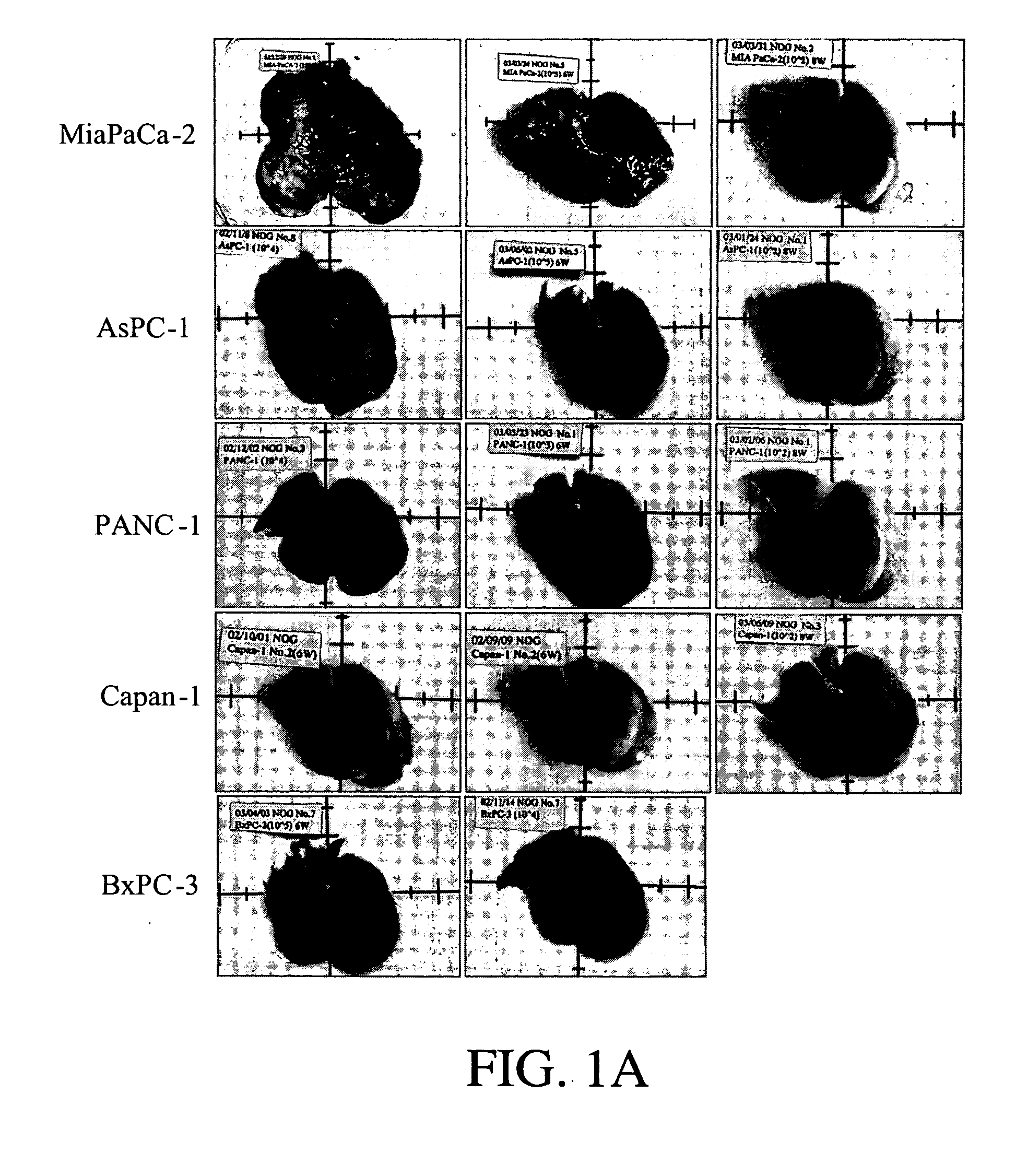Animal model for the analysis of tumor metastasis
- Summary
- Abstract
- Description
- Claims
- Application Information
AI Technical Summary
Benefits of technology
Problems solved by technology
Method used
Image
Examples
example 1
Study of Hepatic Metastasis of Human Pancreatic Cancer
[0066] Materials and Methods
[0067] Male NOG mice and NOD / shiJic-scid mice of 7-9 weeks, which had been obtained from the Central Institute for Experimental Animals (CIEA, Kawasaki, Japan), were used in this study. The animals were kept under specific pathogen-free conditions according to the Guideline for the Regulation of Animal Experimentation of CIEA. All human pancreatic cancer cell lines used in this study were obtained from the American Type Culture Collection (Rockville, Md., USA). Culture media for AsPC-1 and Capan-1 were Dulbecco's modified Eagle's medium (DMEM) supplemented with 20% and 15% fetal bovine serum (FBS, Hyclone), respectively. MIAPaCa-2 and PANC-1 were maintained a culture of DMEM supplemented with 10% FBS. BxPC-3, Capan-2 and PL45 were maintained a culture of RPMI1640 (SIGMA, Cat. No. D6046 or D5796) supplemented with 10% FBS. These were maintained at 37° C. in humidified atmosphere with 5% CO2. Experimen...
example 2
Detection of Cancer Metastasis Related Genes in cDNA Microarray
Materials and Methods
[0082] Human pancreatic tumor cell lines, MIAPaCa-2, Panc1, Capan2 and PL45 (available from ATCC) were cultured according to the method described in Example 1. Total RNA was extracted from confluent culture of those cells using TRIZOL reagent (GIBCO BRL). Cy-3 labeled cDNA probes were synthesized from 20 μG of total RNA using Atlas human 1K specific primer set (BD), PowerScript labeling kit (BD), and Cy-3 fluorochrome (Amersham). Then, the probe was hybridized to the Atlas Glass Human 1.0 Microarray (BD) according to manufacturer's instructions.
[0083] The differentially expressed genes among the pancreatic tumor cell lines were globally searched using the Atlas Glass Human 1.0 Microarray (BD). The Cy-3 labeled signals were detected and obtained and analyzed the corresponding images by aGM418 array scanner (Takara). The data processing was carried out using Imagene Version 5.5 software. In this exp...
PUM
 Login to View More
Login to View More Abstract
Description
Claims
Application Information
 Login to View More
Login to View More - R&D
- Intellectual Property
- Life Sciences
- Materials
- Tech Scout
- Unparalleled Data Quality
- Higher Quality Content
- 60% Fewer Hallucinations
Browse by: Latest US Patents, China's latest patents, Technical Efficacy Thesaurus, Application Domain, Technology Topic, Popular Technical Reports.
© 2025 PatSnap. All rights reserved.Legal|Privacy policy|Modern Slavery Act Transparency Statement|Sitemap|About US| Contact US: help@patsnap.com



